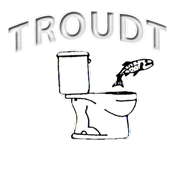
Backflow Repair
Backflow Repair: It Keeps Potable Water Safe
Backflow repair is one of those services that when needed has to be done, and done as soon as possible.
It's actually only been since the late 1950s that communities began to focus on the need for clean drinking water and how to protect public potable water from cross-contamination.
Fire mains and industrial water lines had been supplied with double check valves at least half a century earlier. But there was no treatment for individual plumbing fixtures in those days. It was nearly 1940 before an actual backflow preventer device was produced commercially, and that heralded the era of ordinances for cross-connection control in cities.
These days, backflow prevention is a requirement virtually everywhere. And when you want to check for a backflow device failure, you call a specialist. In our case, Eric Troudt is our Certified Backflow Tester. He tests, repairs, installs and replaces all brands of backflow prevention.
We service all of Northern Colorado (excluding Denver), Eastern Colorado and Southern Wyoming.
What is Backflow Repair?
Backflow prevention devices help protect public health and safety by preventing potable water contamination. Municipal water systems, food processing plants, medical and dental water supplies, and many industrial applications are all critical areas. They are all at risk of fouling public water systems if their backflow prevention systems fail. Water, industrial liquids, gasses, medical waste fluids and other types of contaminants must be kept out of our drinking water. If the prevention system fails, these substances can quickly foul potable water in the neighborhoods and communities surrounding the failed system.
To understand the repair process, it helps to understand how backflow prevention works.
Two types of backflow conditions can occur. Backpressure occurs when the user system is at higher pressure than the supply water system. Backsiphonage is caused when reduced pressure in the supply pipes allow undesirable materials to be drawn into the drinking water supply. This is called cross-contamination.
There are many types of backflow preventers, all designed for specific uses and applications. Some are meant for non-potable applications like fireline, industrial procession or irrigation. Others are designed strictly for keeping drinking water clean. Where hazards are greatest, such as chemical contamination from industrial plants, or biologic contamination from hospital, the systems are more complex. However, water contamination often happens when homeowners make adjustments to their household plumbing, with no thoughts about cross-contamination. National and local plumbing code authorities provide specific information on code requirements.
In short, a backflow preventer acts as a barrier between non-potable water and the community's drinking water. A certified backflow tester will understand the type of preventer installed in a location, be able to test for leakage, and provide a proper repair to end the cross-contamination.
Contact us today to test or repair an existing backflow preventer system, or install a new one for you.

